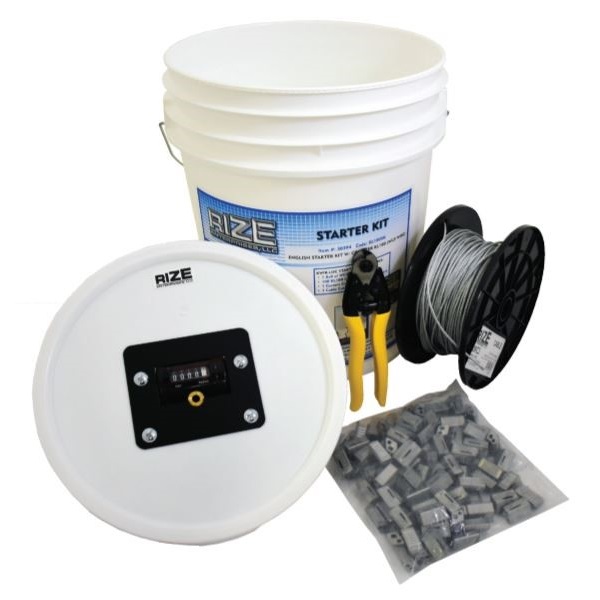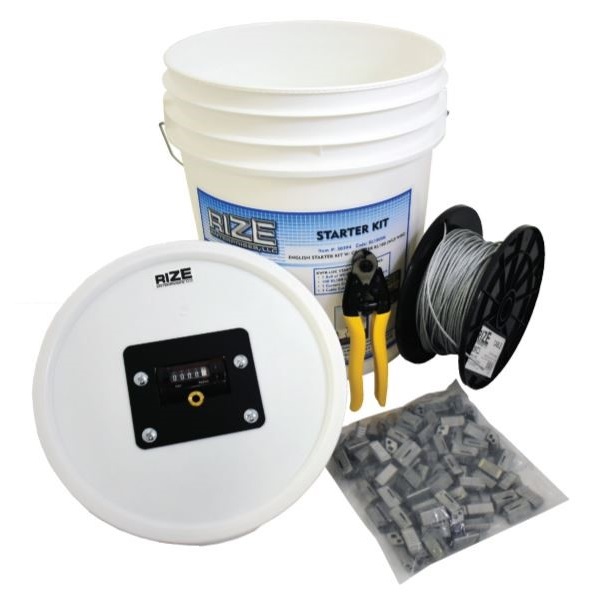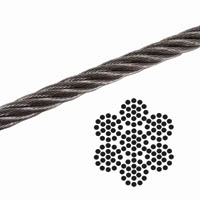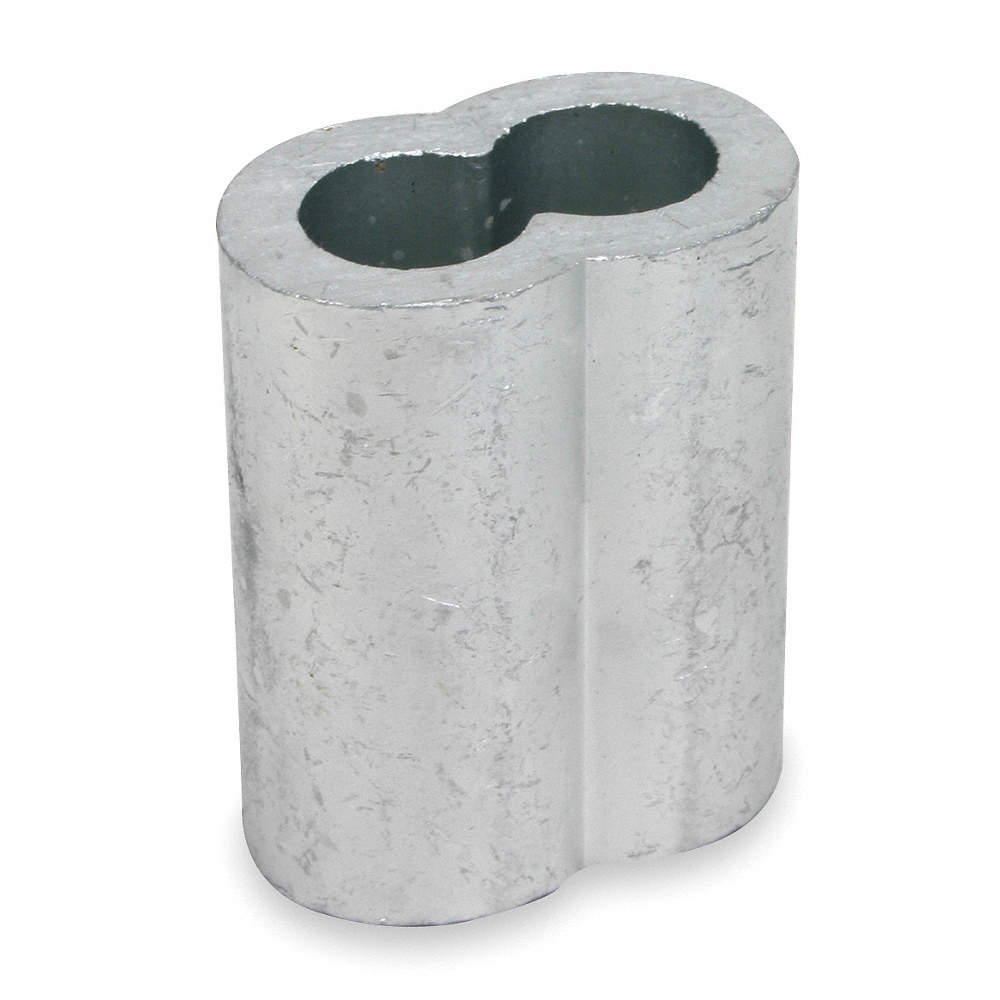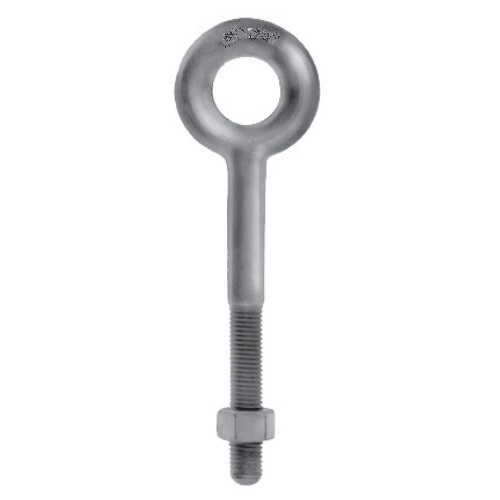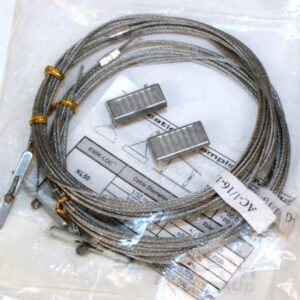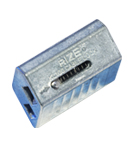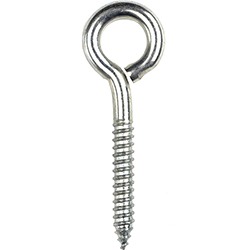Rize KL150 KWIK-LOC Cable Connector
The Rize Kwik-Loc connector is designed to work with Rize RWC cables of the appropriate size. The Kwik-Loc KL150 has a rated maximum work load of 250lbs, with a 5:1 safety factor.
- Description
The Rize Kwik-Loc connector is designed to work with Rize RWC cables of the appropriate size. The Kwik-Loc KL150 has a rated maximum work load of 250lbs, with a 5:1 safety factor.
Related Products
-
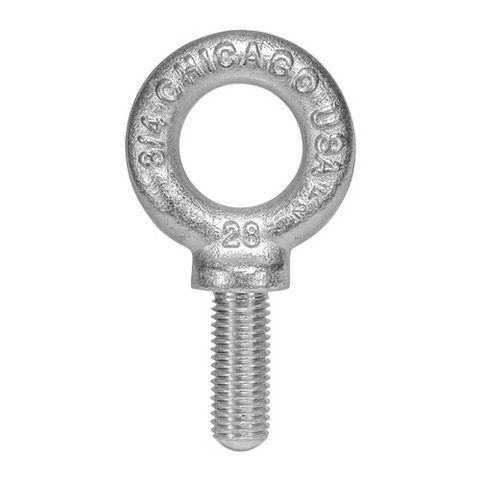 Read MoreQuick View
Read MoreQuick ViewEye Bolt, Machine Forged, Galvanized
Machinery eye bolts are high strength bolts for heavy duty applications. Eye bolts provide a method for anchoring chain and wire rope to a fixed surface such as wood, metal, concrete, etc. Forged galvanized steel material is extra strong and recommended for exterior applications.
-
 Read MoreQuick View
Read MoreQuick ViewAircraft Cable, 304 Stainless Steel
Stainless steel cable has been an industry staple for decades, and for good reason. Through smart engineering, it’s one of the most versatile and reliable building materials.
-
 Read MoreQuick View
Read MoreQuick ViewWire Rope Sleeves, Aluminum
A wire rope sleeve is used to terminate a cable, or join two cables together. When properly applied to 7×7, 7×19 or 6×19 IWRC classification wire rope, the aluminum sleeve eye-splice termination provides a secured connection equal to the breaking strength of the wire rope. This process is also called swaging.
-
 Read MoreQuick View
Read MoreQuick ViewWire Rope Clip 316 Stainless
A wire rope clip, sometimes called a clamp, is used to fix the loose end of the loop back to the wire rope. It consists of a U-shaped bolt, a forged saddle, and two nuts.
-
 Read MoreQuick View
Read MoreQuick ViewEye Bolt, Drop Forged, HDG
Eye bolts provide a method for anchoring chain and wire rope to a fixed surface such as wood, metal, concrete, etc. Forged galvanized steel material is extra strong and recommended for exterior applications.
-
Rize RWC3 X 10 Ft 45 Degree Eyelet Cable
Features the exclusive Rize RWC3 cable, rated at 150 pounds load, with eyelets preinstalled. For quick and secure hanging of light panels, or other overhead items with grid clip anchor points available.
-
Rize KL100 KWIK-LOC Cable Connectors
The Rize Kwik-Loc connector is designed to work with Rize RWC cables of the appropriate size. The Kwik-Loc KL100 has a rated maximum work load of 150lbs, with a 5:1 safety factor.
-
 Read MoreQuick View
Read MoreQuick ViewMalleable Wire Rope Clip, Galvanized
Wire rope clips are fittings used to make an eye or join two cable or wire rope ends together. This design of wire rope clip is available to handle wire rope or strand sizes ranging from 1/16″ – 1-1/8″. Malleable wire rope clips are used in light duty & general purpose applications. Each malleable wire rope clip is zinc plated.
-
Rize RWC2 & KL75 Starter Kit w/Counter Lid & Bucket
Rize Starter Kits include everything you need to get started and finished early on the job.
Kit includes:
1 Roll Cable, RWC2 rated at 75lb loads
100 Kwik-Locs, KL75
1 Bucket with Cable Counter in Lid
1 Rize Cable Cutter -
 Read MoreQuick View
Read MoreQuick ViewEye Lag Screw, Turned
Zinc-Plated Lag Thread Screw Eyes are made with steel strength and are designed to attach cables or rope to surfaces. For use with ropes or cables with the same load rating. Perfect for light duty applications.

